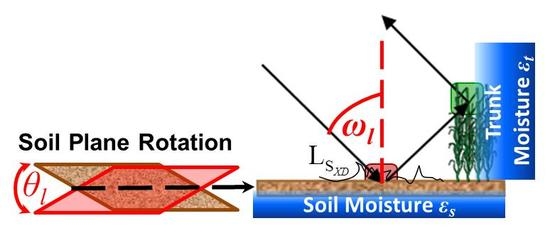An Approach to Extended Fresnel Scattering for Modeling of Depolarizing Soil-Trunk Double-Bounce Scattering
Abstract
:1. Introduction
2. Development of the Extend Fresnel Scattering Model
2.1. Rank 1 Fresnel Scattering
2.2. Rank 3 Extended Fresnel Scattering
3. Sensitivity Analysis of Extended Fresnel Scattering for Distributed Targets
- TXD11, TXD12 are decreasing by 3–6 dB with increasing depolarization, while TXD11 performs as the more stable component of both coherency matrix elements.
- TXD22 decreases by 3–4 dB with increasing depolarization, but stays always higher than TXD11, which is a mandatory condition for the presence of dihedral scattering (compared to surface scattering).
- TXD33 increases up to −10 dB from a Rank 1 (TXD33 = 0) to a Rank 3 (TXD33 > 0) scattering mechanism with increasing depolarization. For weak to medium depolarization (first half of the θ1-range: 0°–45°) TXD22 dominates over TXD33, which reverses for the case of strong depolarization (second half of the θ1-range: 45°–90°).
- TXD11 decreases until approximately 45° and then increase again to the starting level.
- TXD12 shows the same behavior as TXD11, but less pronounced.
- TXD22 and TXD33 increase until approximately 45° and then decrease to the starting level, while it depends on the roughness depolarization level (θ1), which curve is superior with respect to the other.
- The crossing points between TXD11 and TXD22 represent the Brewster angles of the soil (right crossing) and trunk (left crossing) planes, respectively (see the red points in Figure 5, Figure 6 and Figure 7). The position of the Brewster angles along incidence is related to the soil and trunk dielectric constants. For example, Watanabe et al. analyzed the angular position of the Brewster angles for the potential to retrieve moisture of the soil and the trunks in forested areas [23]. This is an alternative multi-angular method for moisture retrieval, which directly depends on the distinct change of the co-polar phase in dihedral scattering along incidence. The more the covering vegetation canopy is changing the polarization of the penetrating EM waves, the less significant is the phase change and the more biased is the localization of the Brewster angles.
Impact of Differential Phase ϕ and Scattering Loss LSXD on Coherency Matrix Combinations
4. Investigation of Experimental SAR Data for Extended Fresnel Scattering in Agriculture
5. Discussion on Potentials and Limitations
6. Summary and First Conclusions
Acknowledgments
Conflicts of Interest
References
- JAXA—ALOS-2 Project Team. Advanced Land Observing Satellite -2: DAICHI-2: The Earth Needs a Health Check, Press-Kit Released by Satellite Applications Mission Directorate I of JAXA. Available online: http://global.jaxa.jp/projects/sat/alos2/pdf/daichi2_e.pdf (accessed on 26 September 2016).
- Rosenqvist, A.; Shimada, M.; Ito, N.; Watanabe, M. ALOS PALSAR: A pathfinder mission for global-scale monitoring of the environment. IEEE Trans. Geosci. Remote Sens. 2007, 45, 3307–3316. [Google Scholar] [CrossRef]
- Yamaguchi, Y.; Sato, A.; Sato, R.; Yamada, H.; Yang, J. A new four-component scattering power decomposition applied to ALOS-PALSAR PLR data sets. In Proceedings of 8th European Conference on Synthetic Aperture Radar, Aachen, Germany, 7–10 June 2010.
- Morena, L.V.; James, K.V.; Beck, J. An introduction to the RADARSAT-2 mission. Can. J. Remote Sens. 2004, 30, 221–234. [Google Scholar] [CrossRef]
- Liu, C.; Shang, J.; Vachon, P.W.; McNairn, H. Multiyear crop monitoring using polarimetric RADARSAT-2 Data. IEEE Trans. Geosci. Remote Sens. 2013, 51, 2227–2240. [Google Scholar] [CrossRef]
- Krieger, G.; Moreira, A.; Fiedler, H.; Hajnsek, I.; Werner, M.; Younis, M.; Zink, M. TanDEM-X: A satellite formation for high-resolution SAR interferometry. IEEE Trans. Geosci. Remote Sens. 2007, 45, 3317–3341. [Google Scholar] [CrossRef]
- Hajnsek, I.; Papathanassiou, K.P.; Busche, T.; Jagdhuber, T.; Kim, J.; Sanjuan Ferrer, M.; Sauer, S.; Villano, M. Fully polarimetric terrasar-X data: Data quality and scientific analysis. In Proceedings of IEEE International Geoscience and Remote Sensing Symposium, Honolulu, HI, USA, 25–30 July 2010.
- Cloude, S.R. Polarisation: Applications in Remote Sensing; Oxford University Press: Oxford, UK, 2010. [Google Scholar]
- Lee, J.S.; Pottier, E. Polarimetric. Radar Imaging: from Basics to Applications; Taylor & Francis: Boca Raton, FL, USA, 2009. [Google Scholar]
- Cloude, S.R.; Pottier, E. A review of target decomposition theorems in radar polarimetry. IEEE Trans. Geosci. Remote Sens. 1996, 34, 498–518. [Google Scholar] [CrossRef]
- Freeman, A.; Durden, S.L. A three-component scattering model for polarimetric SAR data. IEEE Trans. Geosci. Remote Sens. 1998, 36, 963–973. [Google Scholar] [CrossRef]
- Jagdhuber, T. Soil Parameter Retrieval under Vegetation Cover Using Sar Polarimetry. Ph.D. Thesis, University of Potsdam, Potsdam, Germany, 2012. [Google Scholar]
- Yamaguchi, Y.; Yajima, Y.; Yamada, H. A four component decomposition of POLSAR images based on the coherency matrix. IEEE Trans. Geosci. Remote Sens. Lett. 2006, 3, 292–296. [Google Scholar] [CrossRef]
- Hajnsek, I.; Jagdhuber, T.; Schoen, H.; Papathanassiou, K.P. Potential of estimating soil moisture under vegetation cover by means of PolSAR. IEEE Trans. Geosci. Remote Sens. 2009, 47, 442–454. [Google Scholar] [CrossRef]
- Ulaby, F.T.; Held, D.; Dobson, M.C.; McDonald, K.C.; Senior, T.B.A. Relating polaization phase difference of sar signals to scene properties. IEEE Trans. Geosci. Remote Sens. 1987, GE-25, 83–92. [Google Scholar] [CrossRef]
- Lee, B.J.; Khuu, V.P.; Zhang, Z.M. Partially coherent spectral transmittance of dielectric thin films with rough surfaces. J. Thermophys. Heat Transf. 2005, 19, 360–366. [Google Scholar] [CrossRef]
- Arii, M.; van Zyl, J.J.; Kim, Y. A general characterization for polarimetric scattering from vegetation canopies. IEEE Trans. Geosci. Remote Sens. 2010, 48, 3349–3357. [Google Scholar] [CrossRef]
- Arii, M.; van Zyl, J.J.; Kim, Y. Improvement of adaptive-model based decomposition with polarization orientation compensation. In Proceedings of IGARSS, Munich, Germany, 22–27 July 2012.
- Dahon, C.; Ferro-Famil, L.; Titin-Schnaider, C.; Pottier, E. Computing the double-bounce reflection coherent effect in an incoherent electromagnetic scattering model. IEEE Trans. Geosci. Remote Sens. Lett. 2006, 3, 241–245. [Google Scholar] [CrossRef]
- Lee, J.S.; Ainsworth, T.L.; Wang, Y. Generalized polarimetric model-based decomposition using incoherent scattering models. IEEE Trans. Geosci. Remote Sens. 2014, 52, 2474–2491. [Google Scholar] [CrossRef]
- Neumann, M. Remote Sensing of Vegetation Using Multi-Baseline Polarimetric Sar Interferometry: Theoretical Modelling and Physical Parameter Retrieval. Ph.D. Thesis, University of Rennes 1, Rennes, France, 2009. [Google Scholar]
- Al-Kahachi, N. Polarimetric SAR Modelling of a Two-Layer Structure—A Case Study Based on Subartic Lakes. 2014-01; German Aerospace Center: Oberpfaffenhofen, Germany, 2014. [Google Scholar]
- Watanabe, T.; Yamada, H.; Arii, M.; Park, S.; Yamaguchi, Y. Model experiment of permittivity retrieval method forforested area by using Brewster's angle. In Proceedings of IGARSS, Munich, Germany, 22–27 July 2012.
- Hajnsek, I.; Pottier, E.; Cloude, S.R. Inversion of surface parameters from polarimetric SAR. IEEE Trans. Geosci. Remote Sens. 2003, 41, 159–164. [Google Scholar] [CrossRef]
- Cloude, S.R.; Pottier, E.; Boerner, W.M. Unsupervised image classification using the Entropy/Alpha/Anisotropy method in radar polarimetry. In Proceedings of the 2002 AIRSAR Earth Sciences and Applications Workshop; Jet Propulsion Laboratory: Pasadena, CA, USA, 2002. [Google Scholar]
- Bianchi, R.; Davidson, M.; Hajnsek, I.; Wooding, M.; Wloczyk, C. AgriSAR 2006—Final Report; 19974/06/I-LG; European Space Agency: Paris, France, 2006. [Google Scholar]
- Jagdhuber, T.; Hajnsek, I. OPAQUE 2007: Kampagnen-und Prozessierungsbericht; DLR-OPAQUE-2007; German Aerospace Center: Oberpfaffenhofen, Germany, 2009. [Google Scholar]
- Hajnsek, I.; Jagdhuber, T.; Schoen, H. Sarteo-Data Analysis Report; DLR-HR-SARTEO-002; German Aerospace Center, Microwaves and Radar Institute: Oberpaffenhofen, Germany, 2009. [Google Scholar]
- Jagdhuber, T.; Kohling, M.; Hajnsek, I. TERENO F-SAR Airborne Campaign 2011 @ Rur, Bode and Ammer catchments. In Proceedings of the CT Environmental Sensing Meeting, DLR Oberpfaffenhofen, Germany, 29 November 2011.
- Jagdhuber, T.; Hajnsek, I.; Papathanassiou, K.P. Soil moisture estimation under vegetation applying polarimetric decomposition techniques. In Proceedings of the 4th International Workshop on Science and Applications of Sar Polarimetry and Polarimetric Interferometry, Frascati, Italy, 26–30 January 2009.
- Jagdhuber, T.; Hajnsek, I.; Bronstert, A.; Papathanassiou, K.P. Soil moisture estimation under low vegetation cover using a multi-angular polarimetric decomposition. IEEE Trans. Geosci. Remote Sens. 2012, 51, 2201–2215. [Google Scholar] [CrossRef]
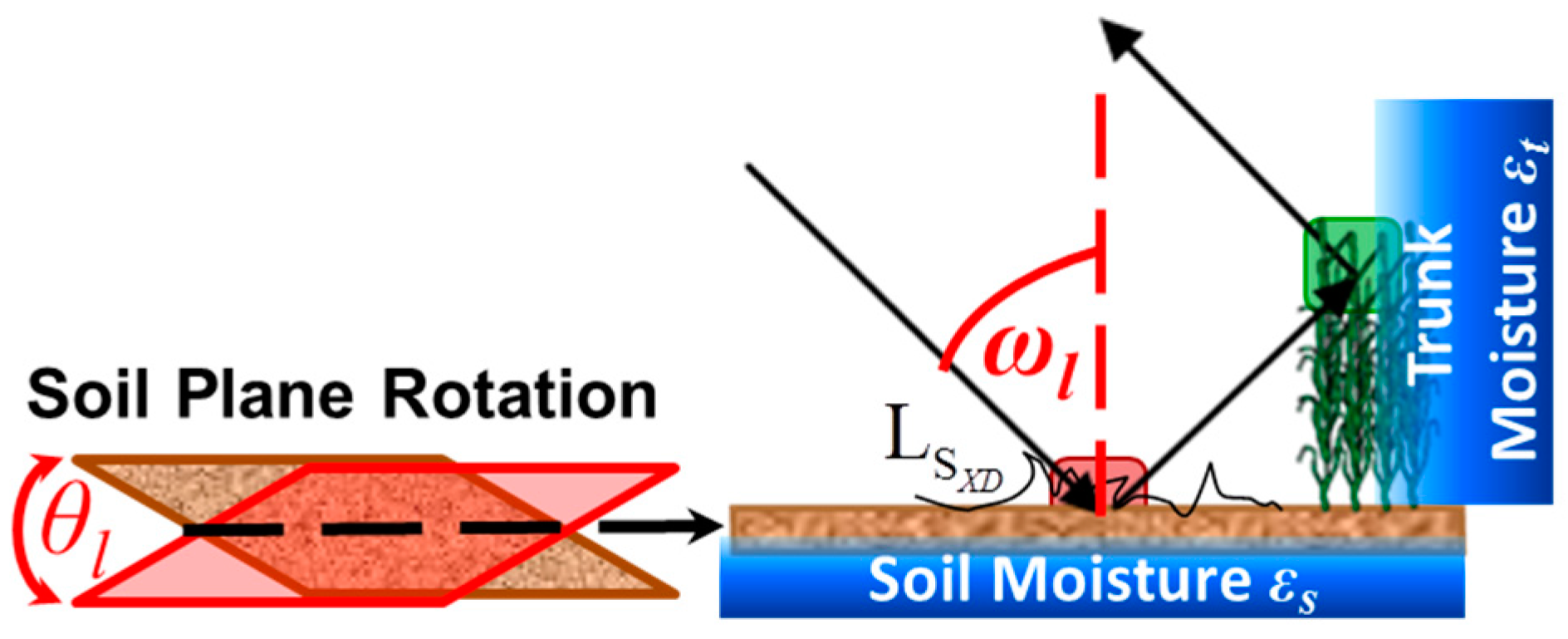
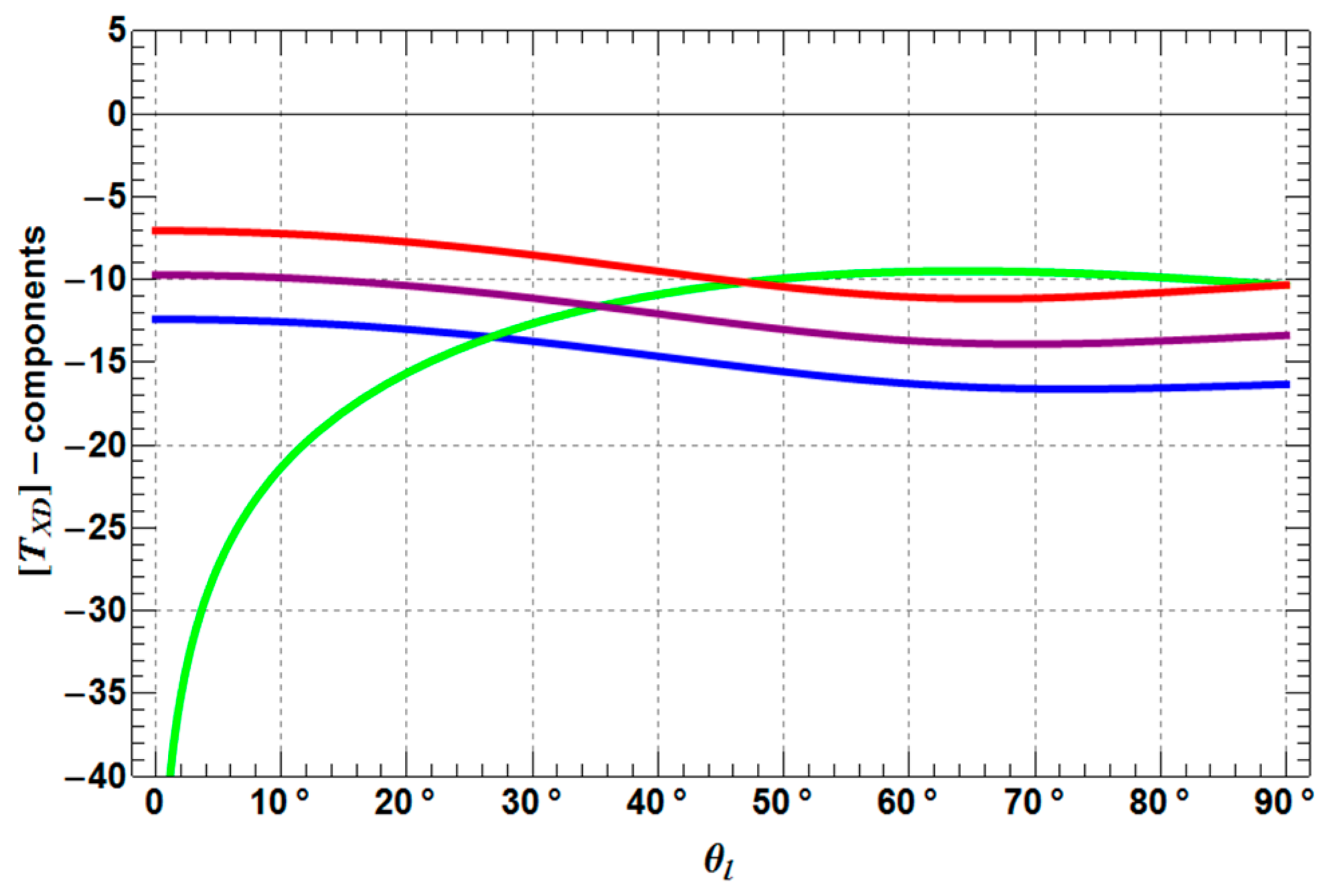
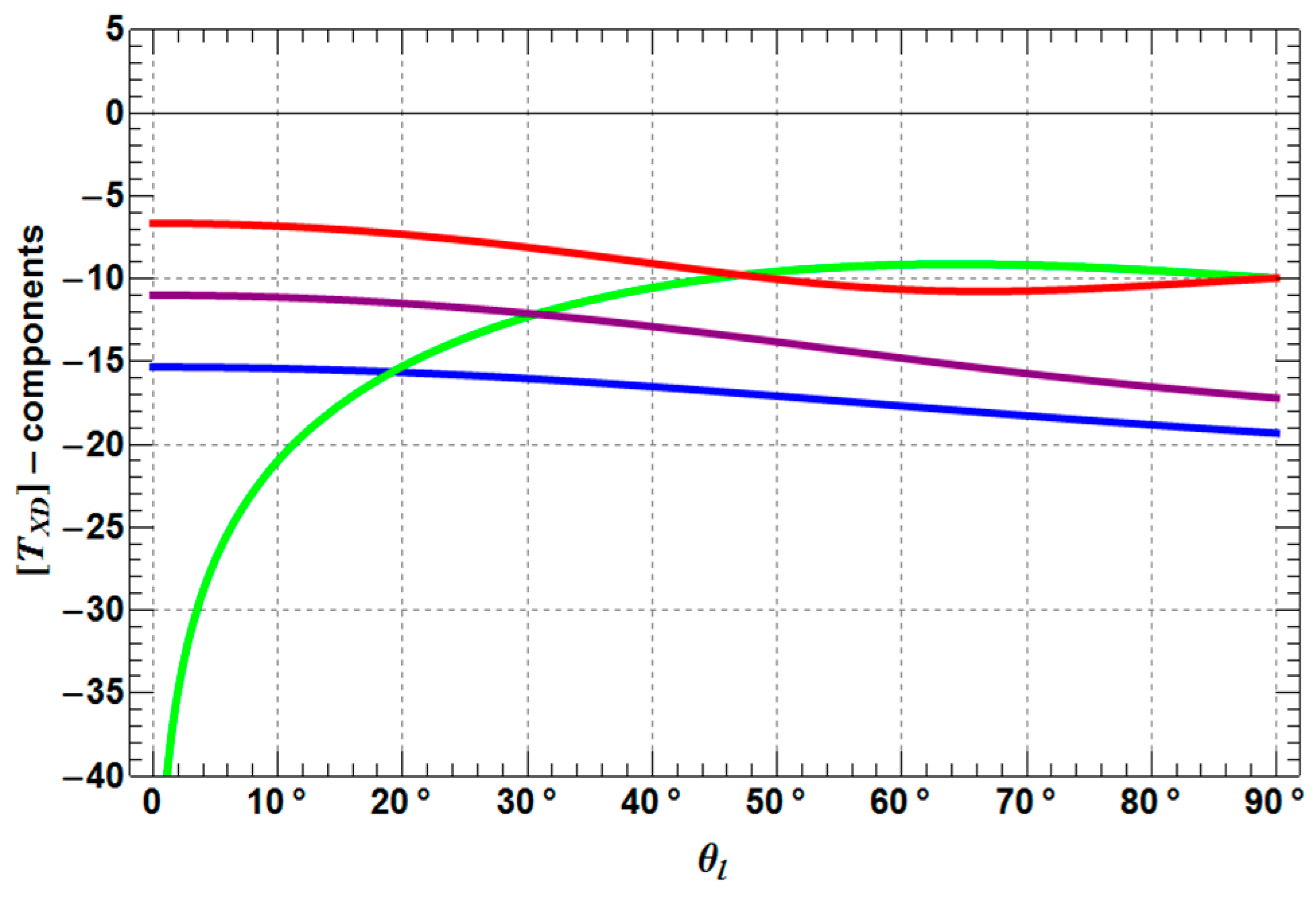

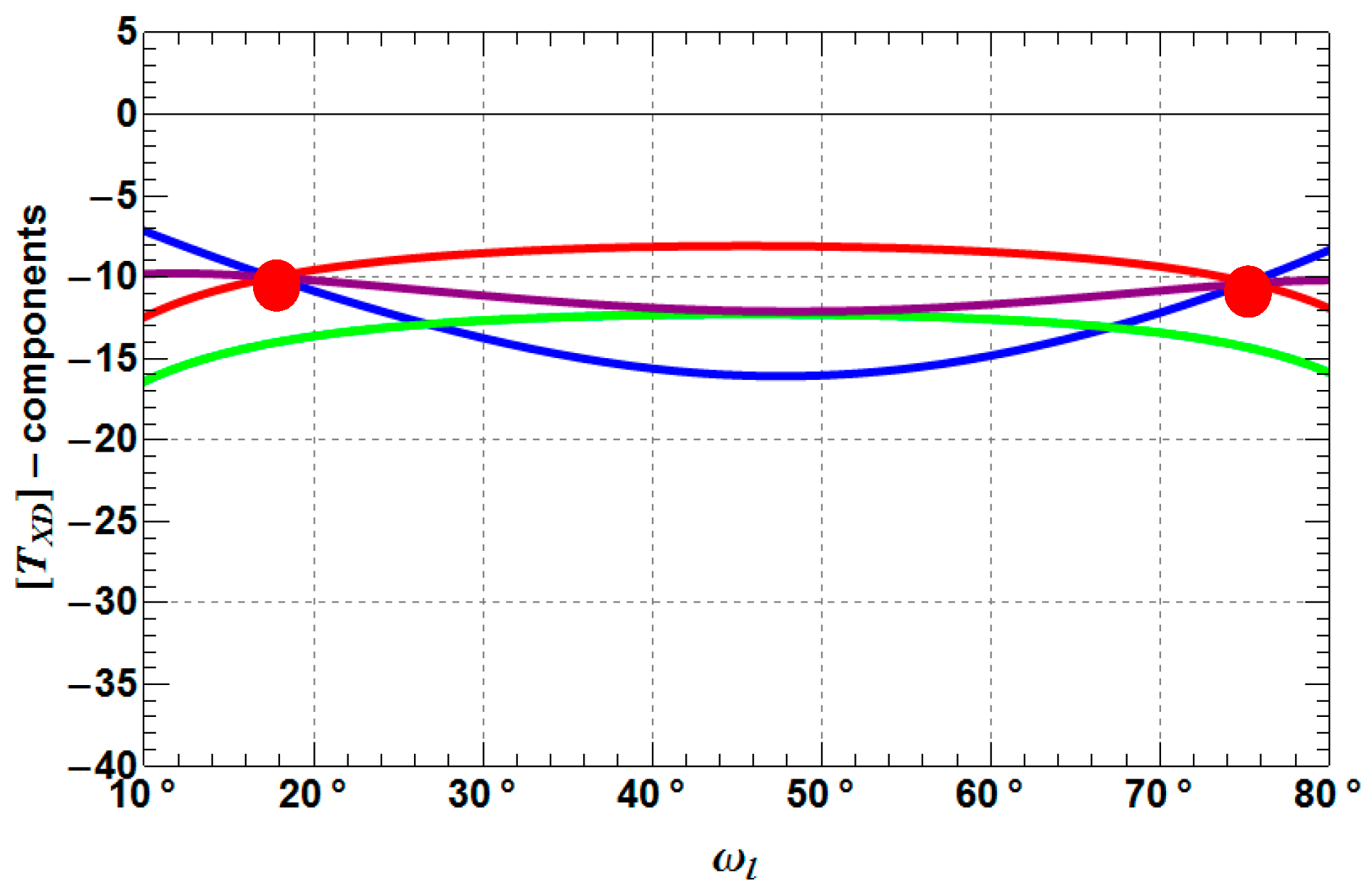
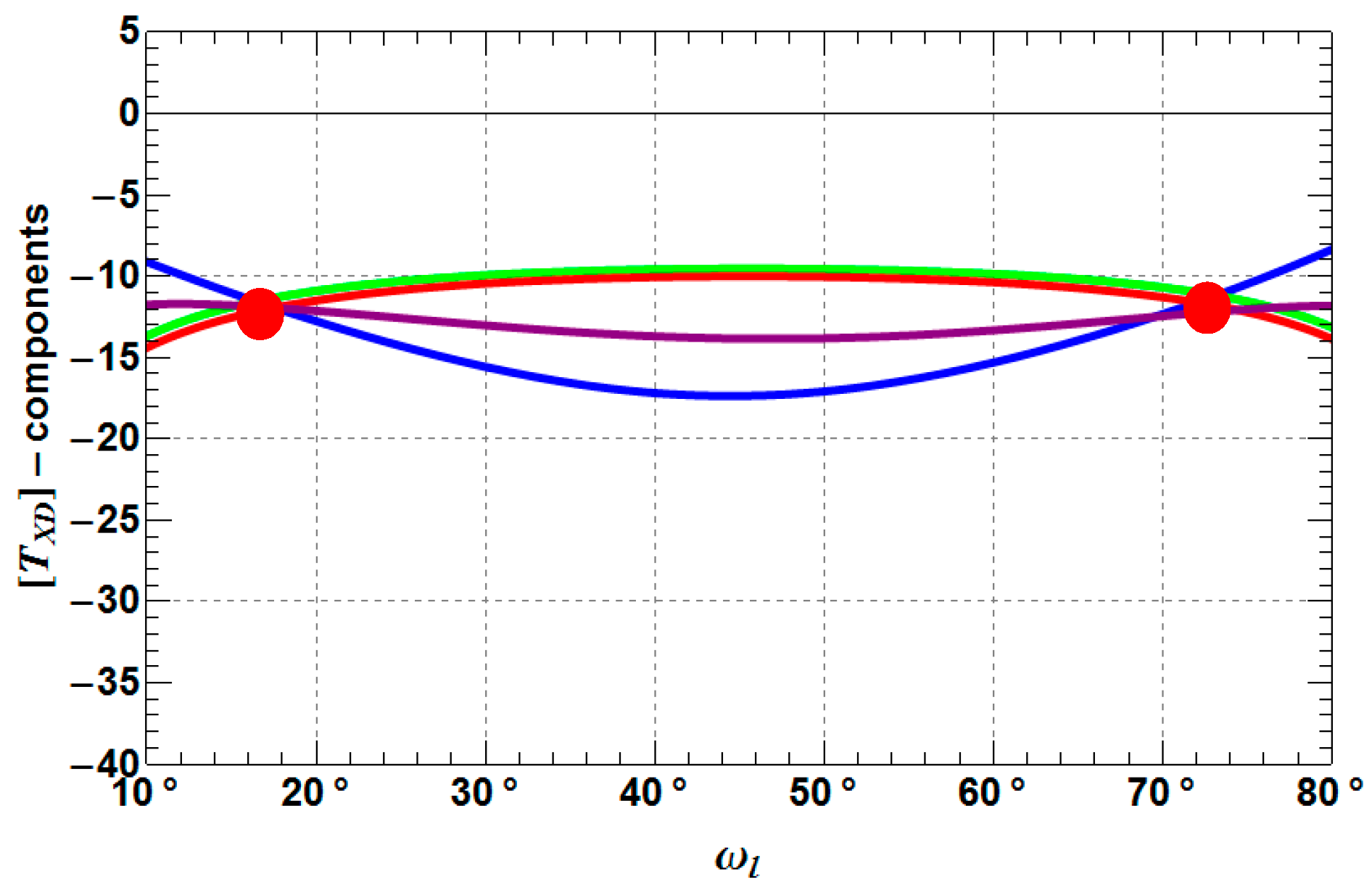
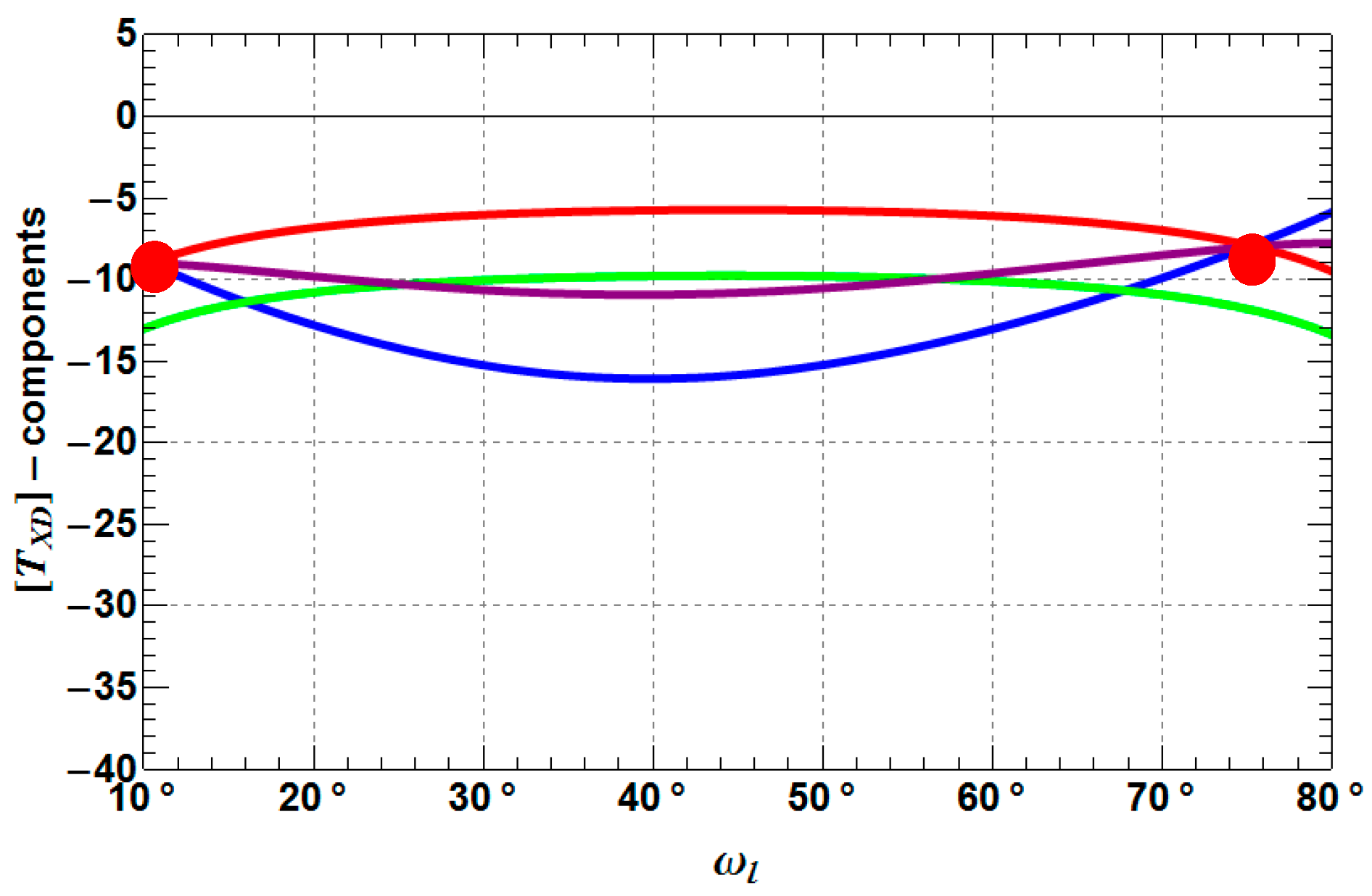



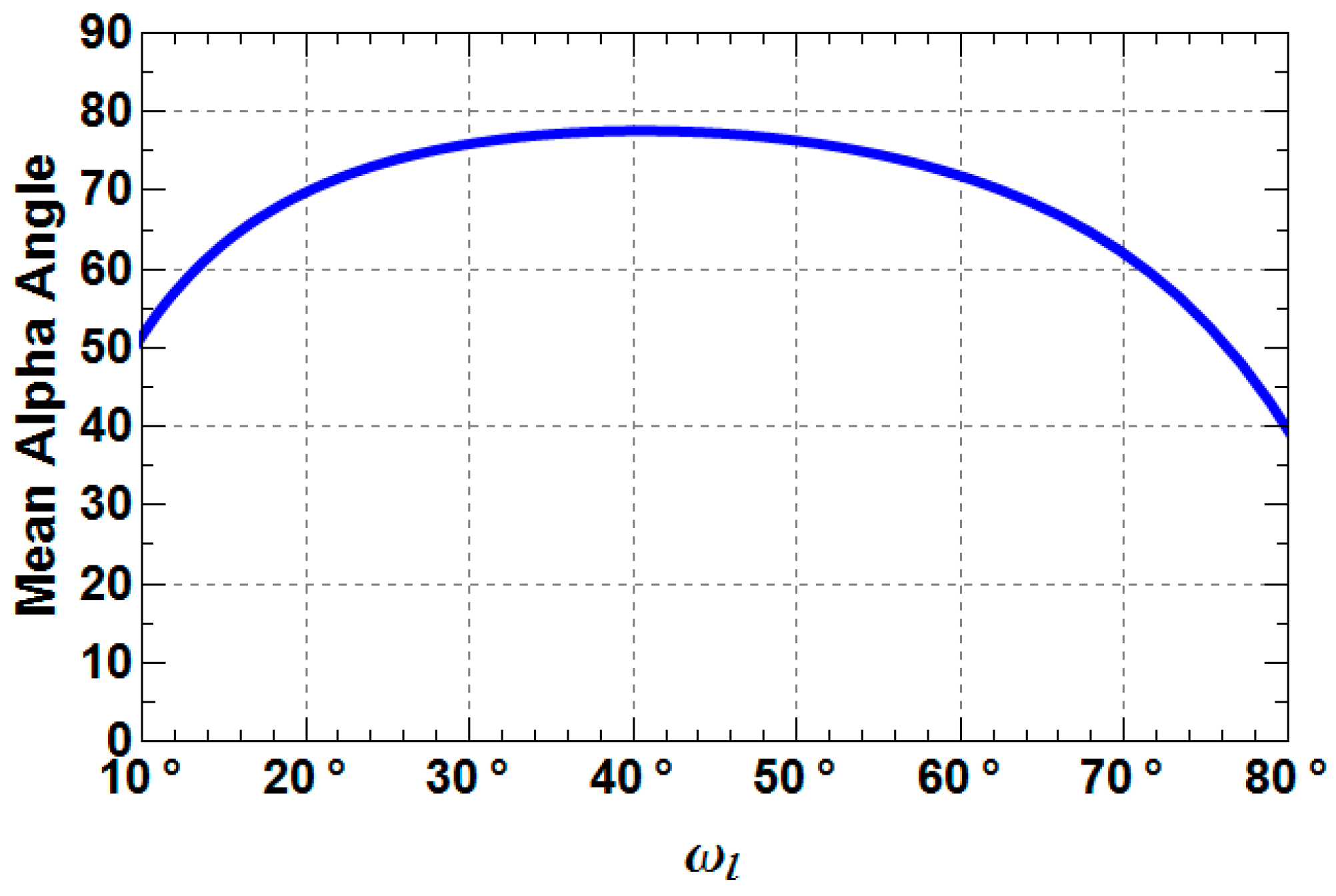
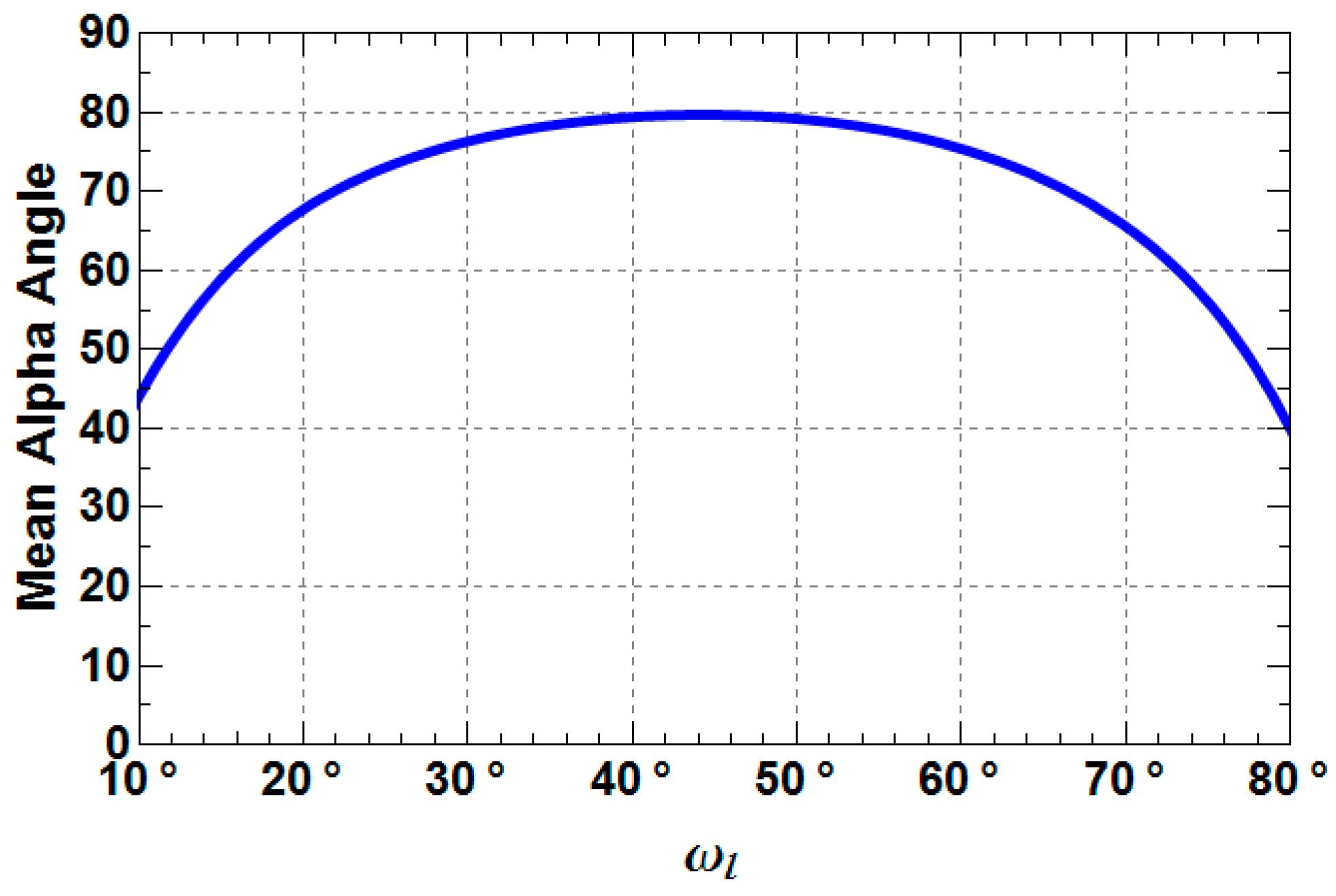
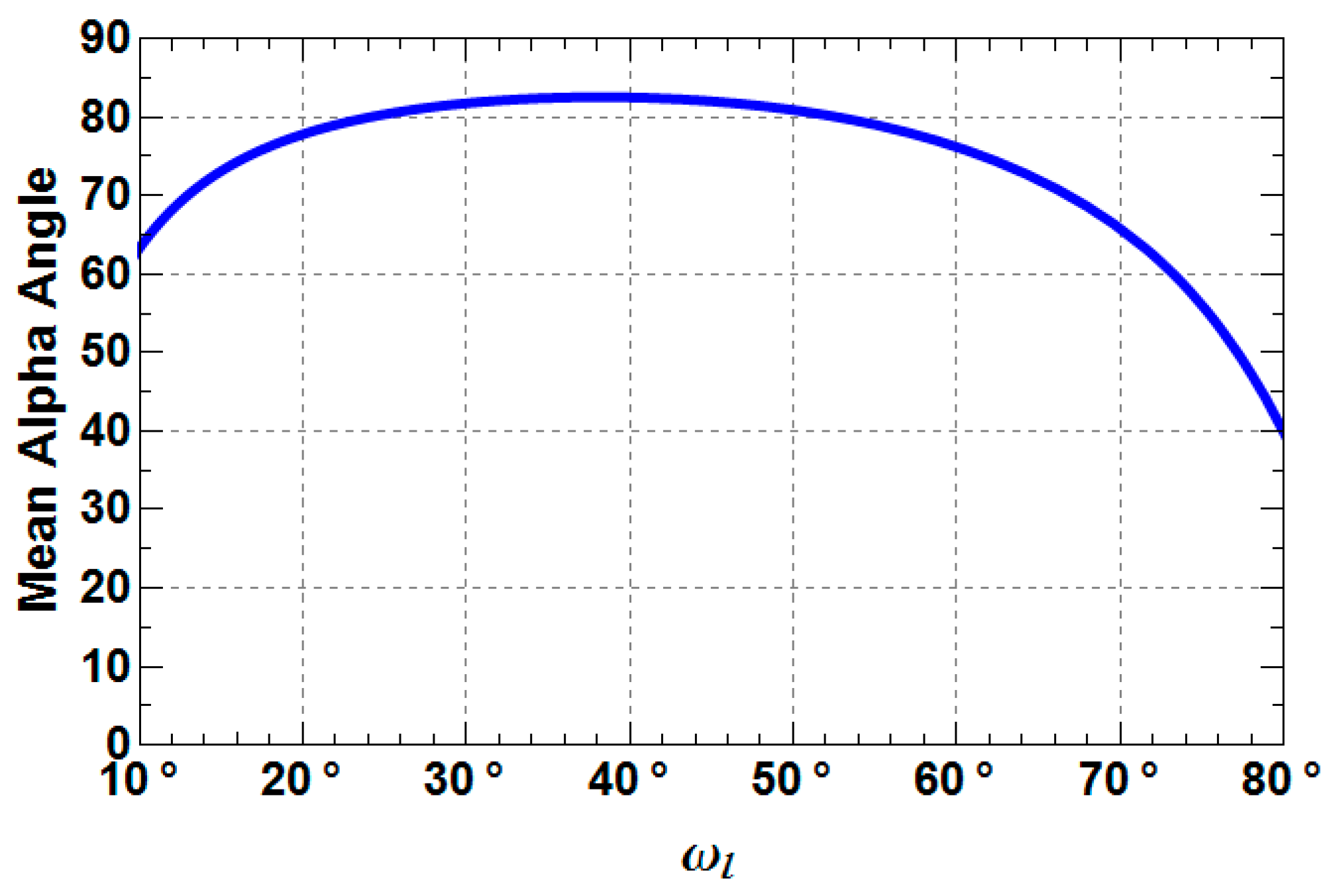
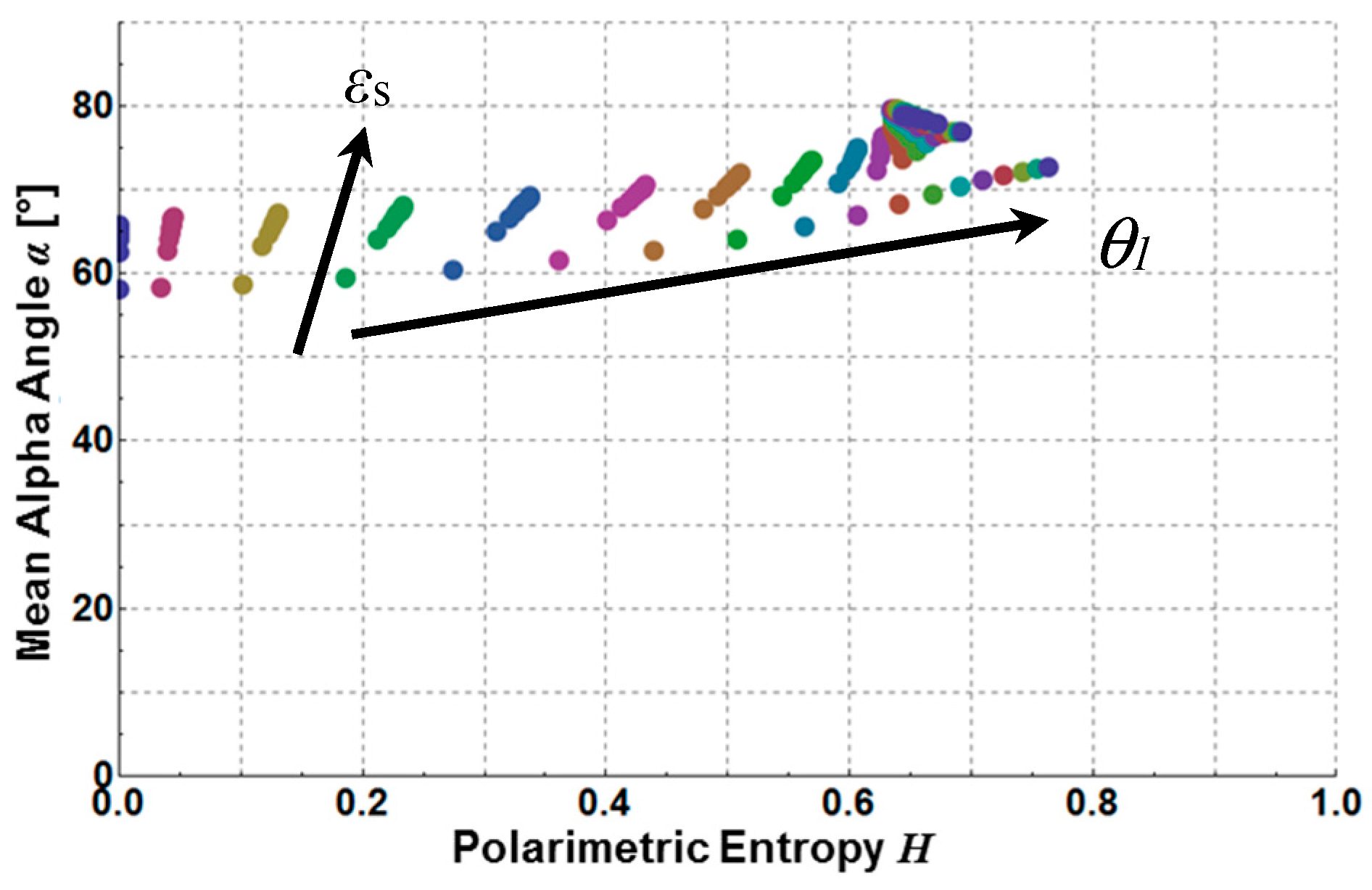



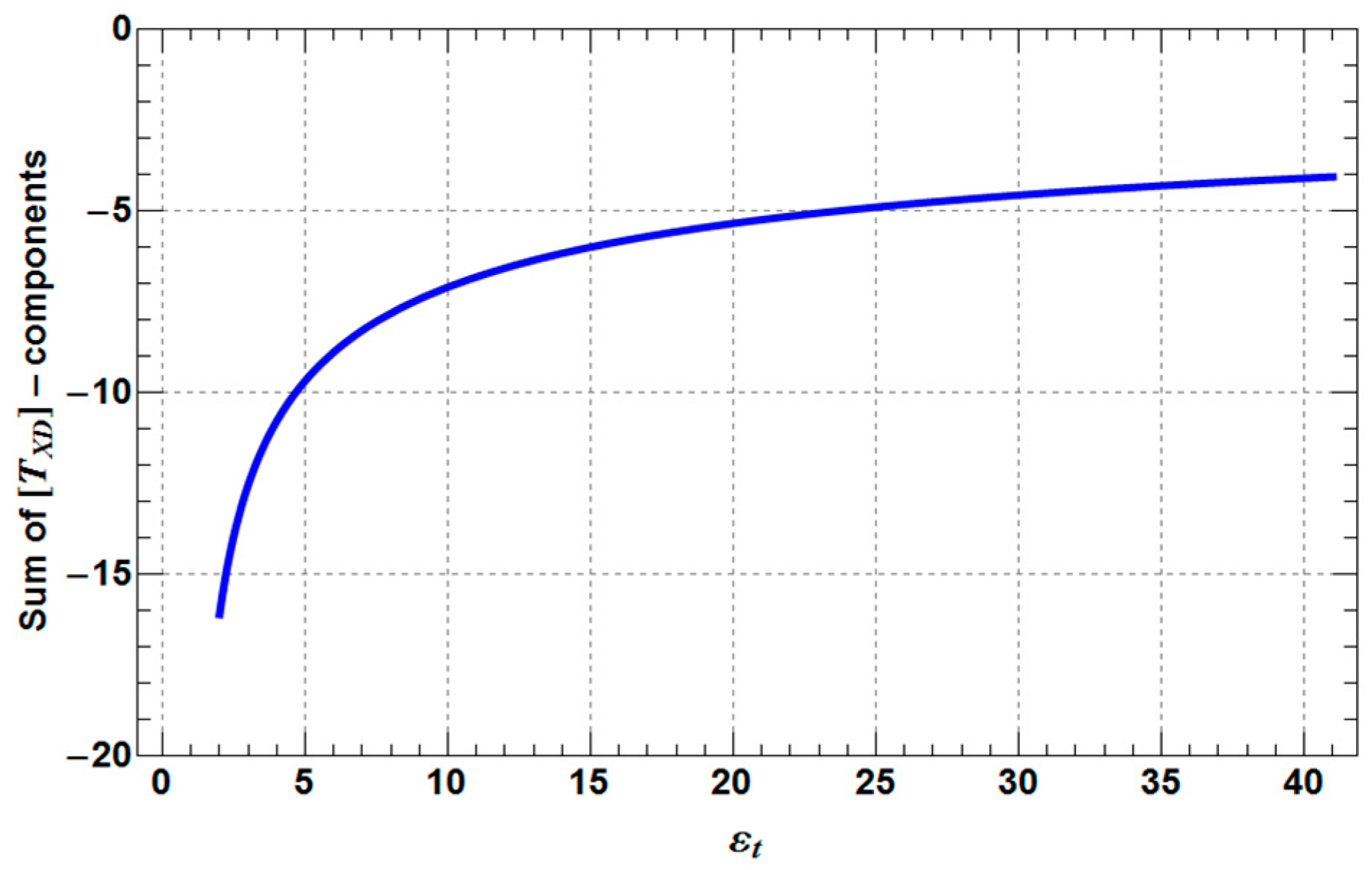
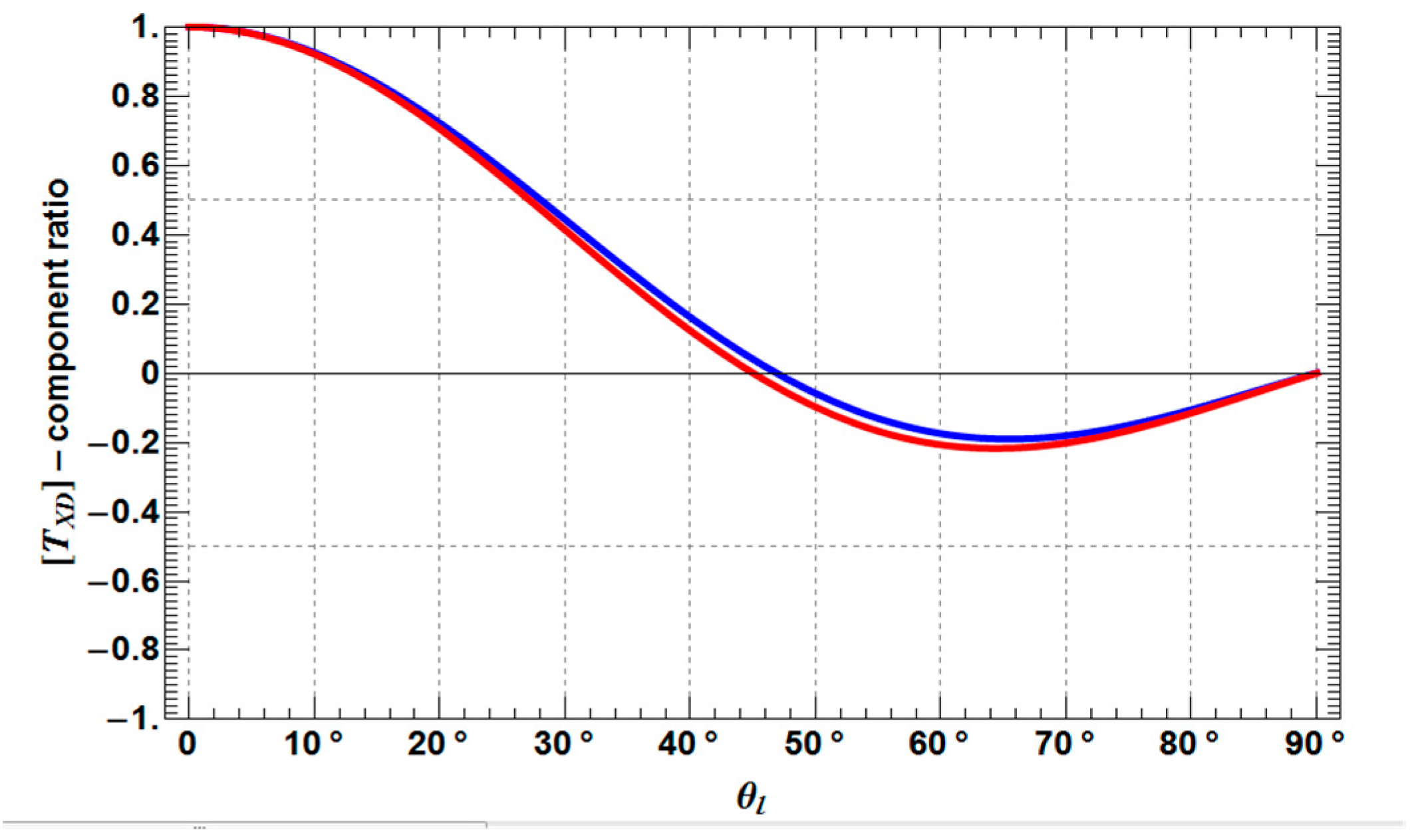
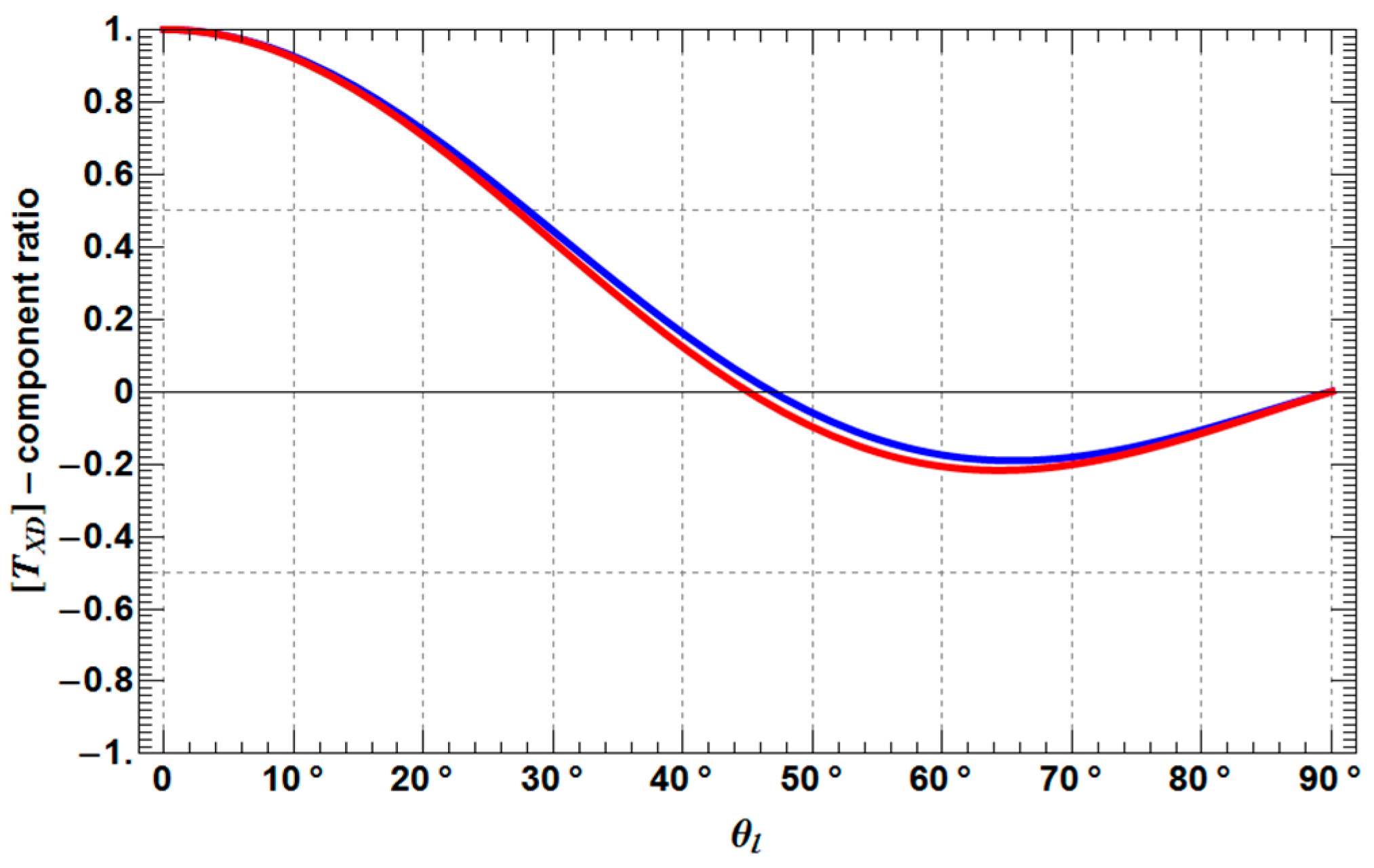
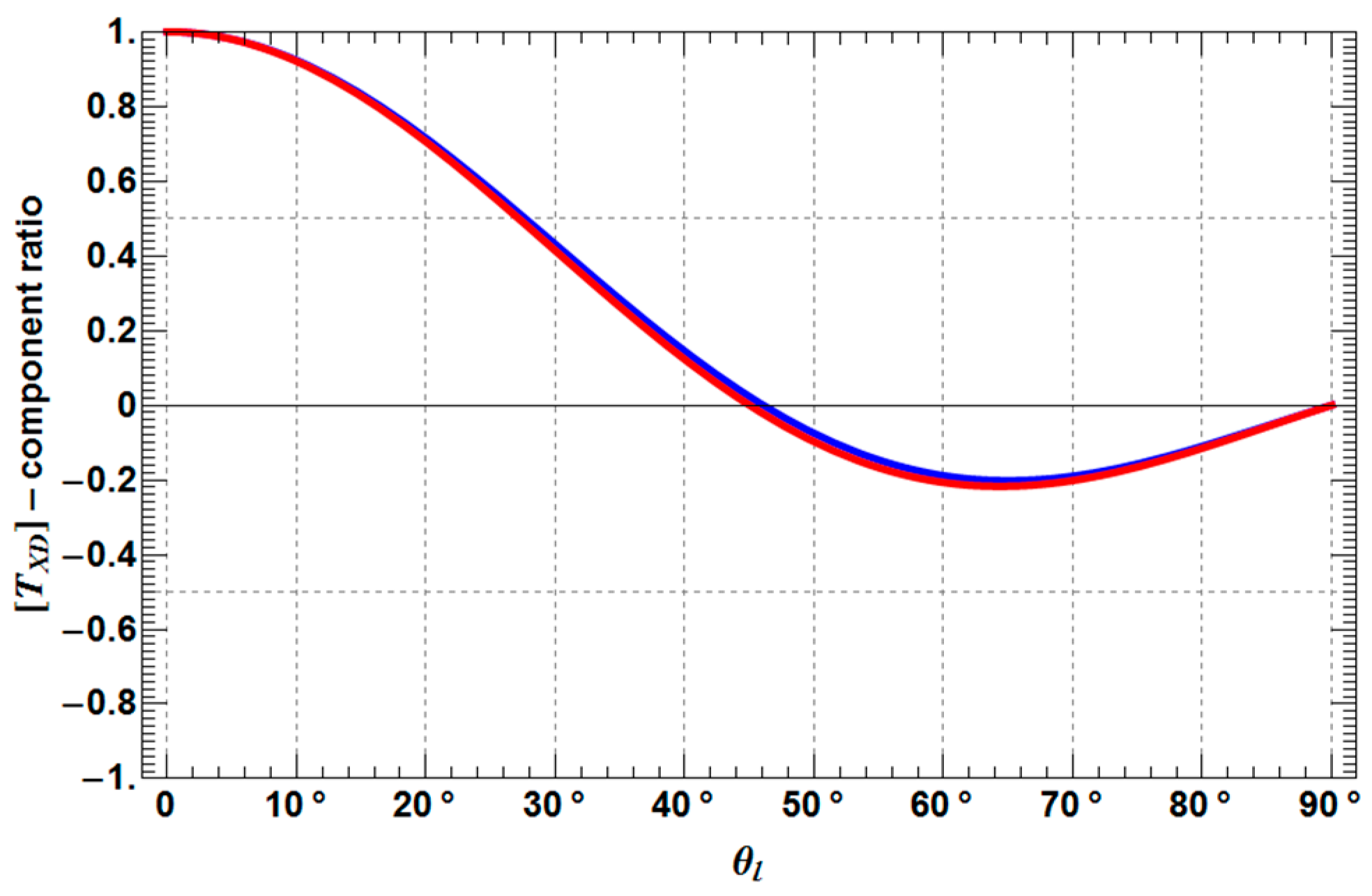

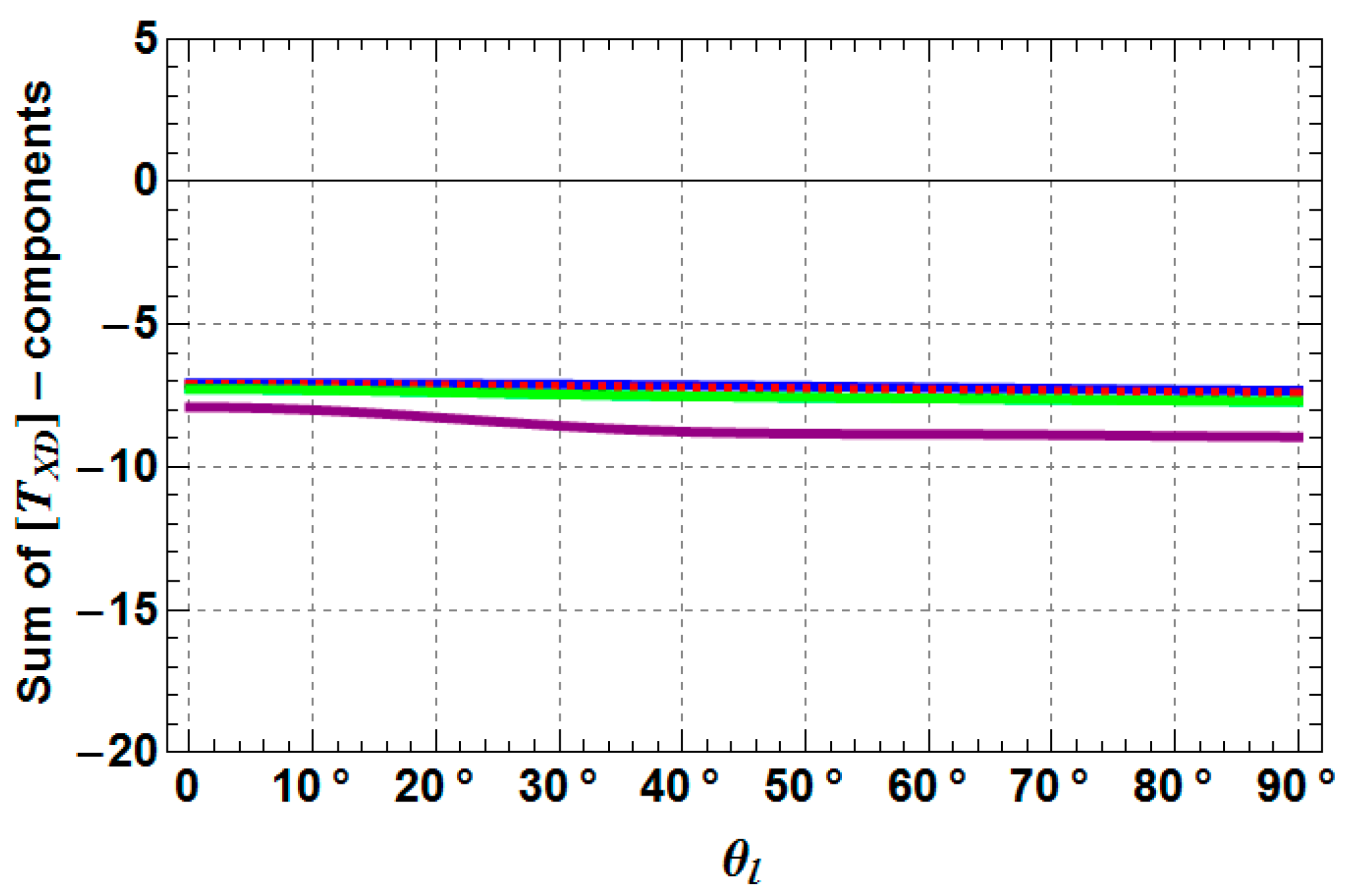



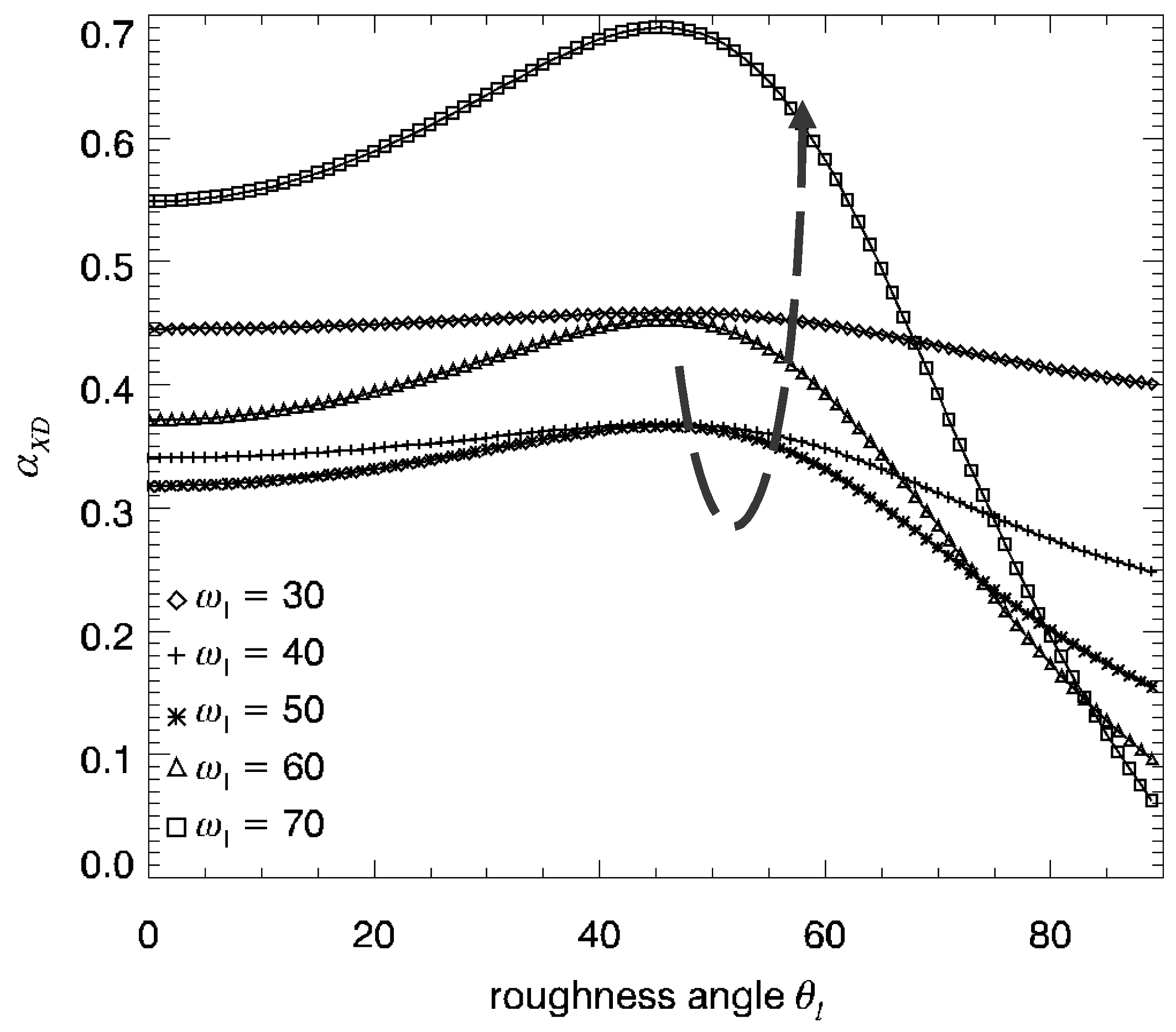
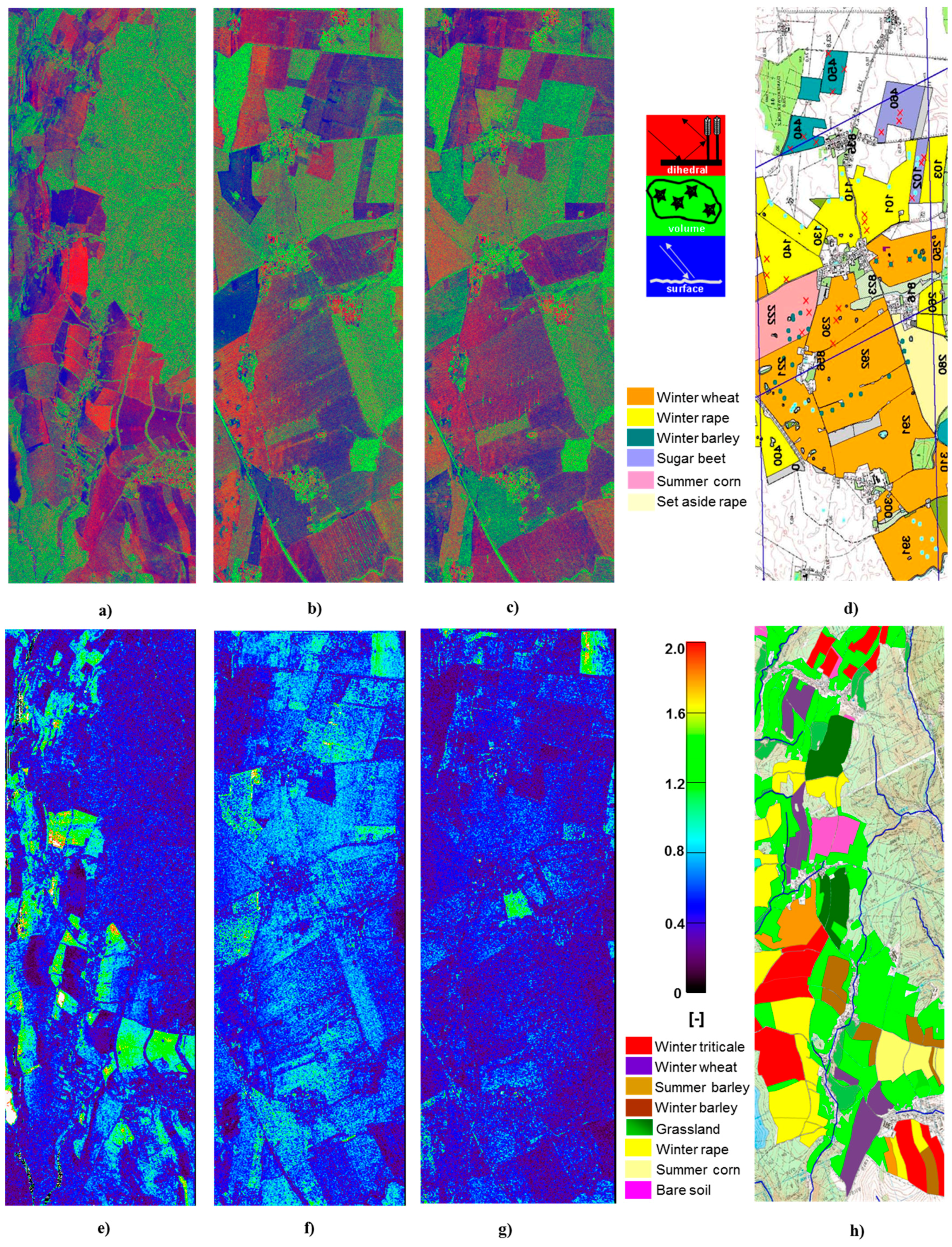
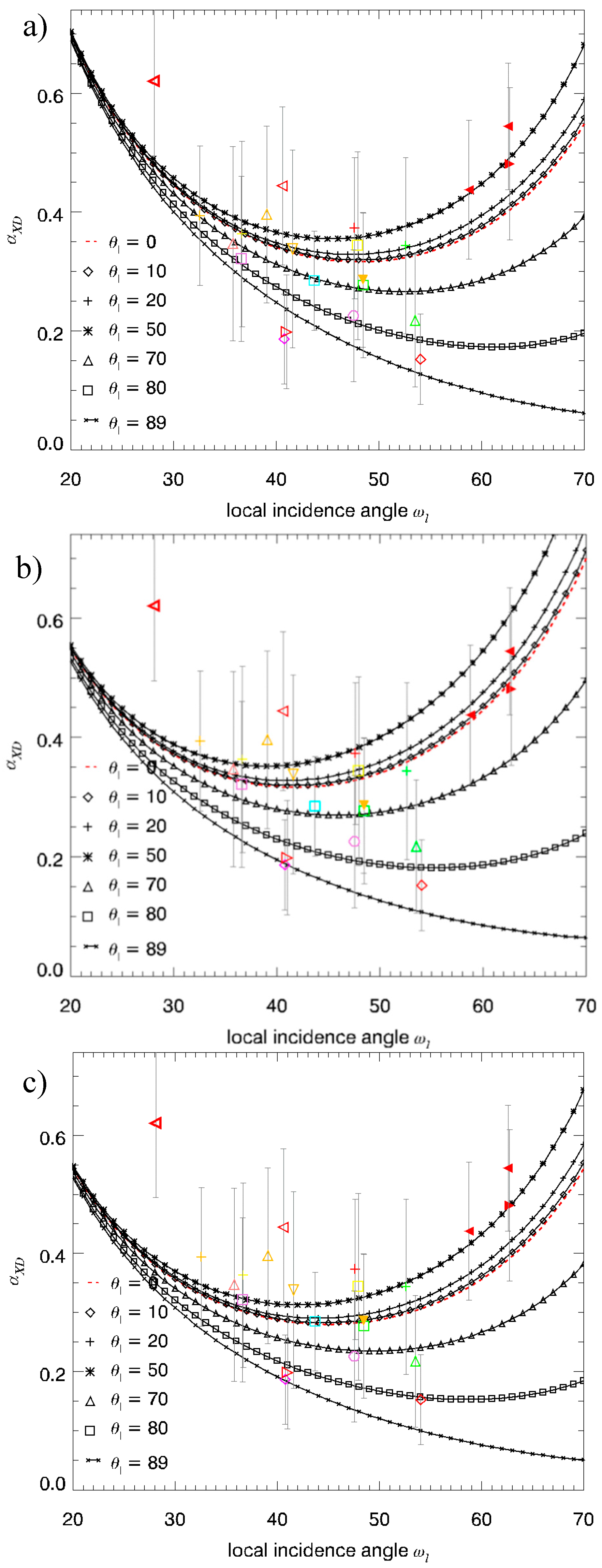
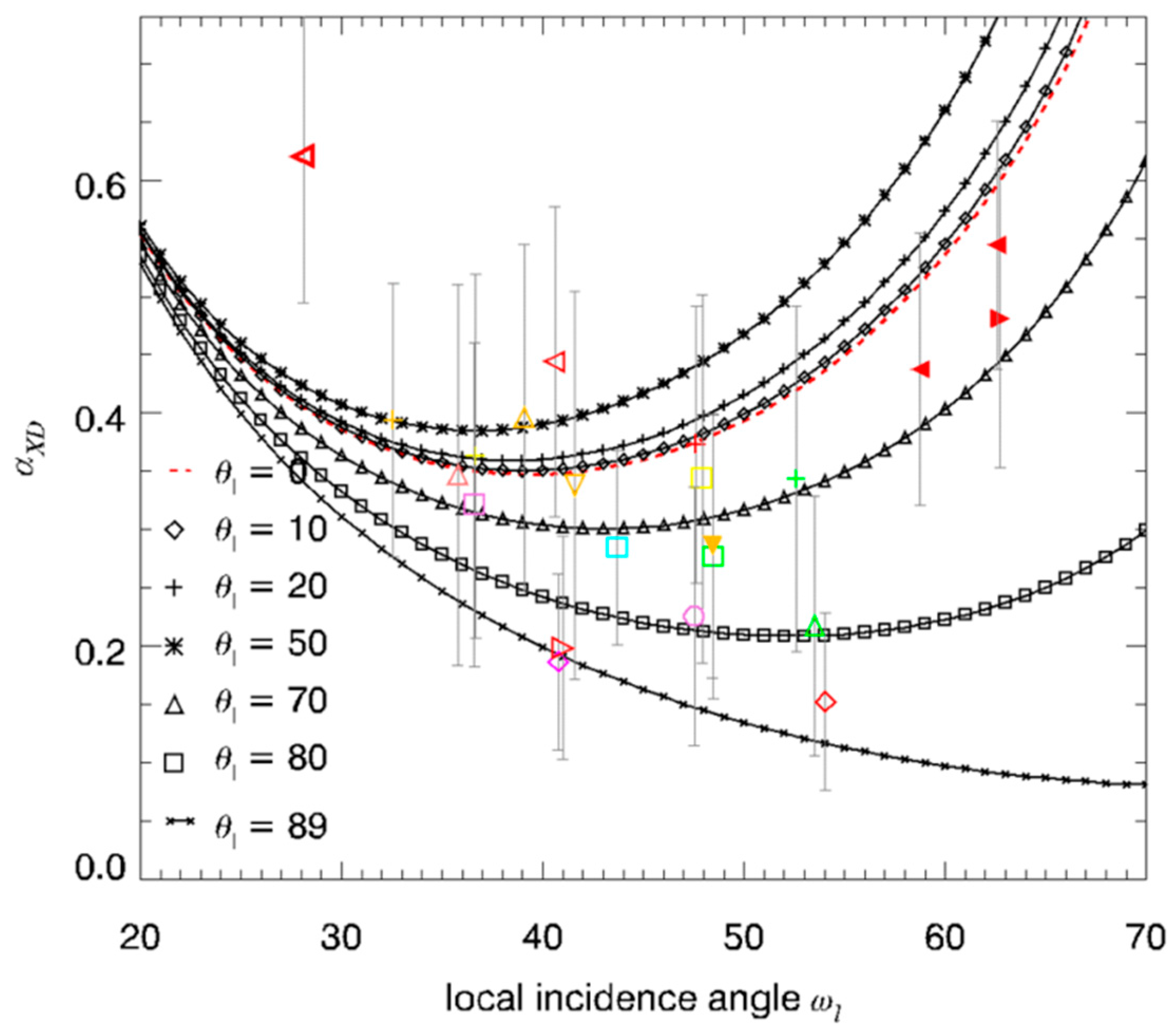
| Campaign | Date | Approx. Mean εs-Level (-) |
|---|---|---|
| AgriSAR | 7 June 2006 | 9 |
| AgriSAR | 5 July 2006 | 5 |
| OPAQUE | 31 May 2007 | 17 |
| SARTEO | 27 May 2008 | 11 |
| TERENO Bode | 22 May 2012 | 8 |
| TERENO Demmin | 23 May 2012 | 9 |
© 2016 by the author; licensee MDPI, Basel, Switzerland. This article is an open access article distributed under the terms and conditions of the Creative Commons Attribution (CC-BY) license (http://creativecommons.org/licenses/by/4.0/).
Share and Cite
Jagdhuber, T. An Approach to Extended Fresnel Scattering for Modeling of Depolarizing Soil-Trunk Double-Bounce Scattering. Remote Sens. 2016, 8, 818. https://doi.org/10.3390/rs8100818
Jagdhuber T. An Approach to Extended Fresnel Scattering for Modeling of Depolarizing Soil-Trunk Double-Bounce Scattering. Remote Sensing. 2016; 8(10):818. https://doi.org/10.3390/rs8100818
Chicago/Turabian StyleJagdhuber, Thomas. 2016. "An Approach to Extended Fresnel Scattering for Modeling of Depolarizing Soil-Trunk Double-Bounce Scattering" Remote Sensing 8, no. 10: 818. https://doi.org/10.3390/rs8100818





